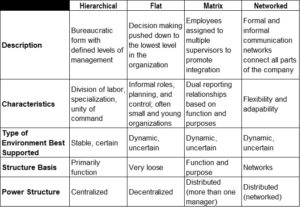Organizational Structures
Here at BDCC, we work with many early-stage businesses, and we’re often asked questions about organizational strategies and structures. In today’s blog we will define organizational strategy and shed a light on some of the organizational structures.
So, what is an organizational strategy?
Organizational strategy is coordinated set of actions that leverages the use of organizational structure, management control systems, and organizational culture to effectively achieve the preset objectives.
In our previous blog, we discussed how a mission statement can create a culture in an organization. When developing your organizational strategy, keep in mind the culture and values you reflected on and build actionable rules that support it.
Now, let us talk about organizational structure.
The structure of a startup is usually loose, informal, and fluid. Nevertheless, those startups need to think about the structure during the transition period (period leading to growth). Organizational structure is designed to facilitate the communication and work processes necessary to attain organizational goals. It is a design element that typically reflects the structure of reporting relationships, the flow of information, and ensures that decision rights are correctly allocated.
There are 3 traditional organizational structures, hierarchical, flat, and matrix. With the technological advancements a new organizational structure emerged, it is called networked structure.
Below is a comparison of these four types of organizational structures.

There are other types of organizational structures such as zero-time organization, adaptive organization, and heterarchies. Mostly they are a mix of the traditional structures.
A zero-time organization is designed to respond instantly to customers, employees, suppliers, and stakeholders’ demand. An example of zero-time organization would be Amazon.
Adaptive organizational structure is an organization that can successfully adapt to the rapid and unexpected changes that occur in its environment. Adaptive organizations are flexible, able to develop fast, and tend to entrust more powers to the employees.
Lastly, heterarchical organizations may divide and unite groups in various ways according to multiple concerns that arise according to perspective, it is designed to provide more constructive knowledge.
We hope you find this helpful, and we look forward to hearing from you.



